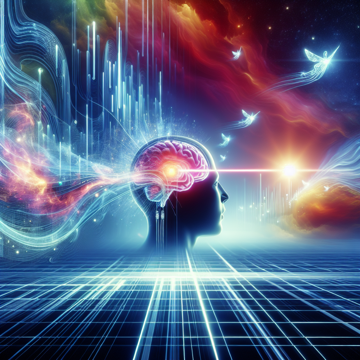Apple Wants to Read Your Mind, Nvidia’s Eating Data, and Quantum Physics Could Light Up the Data Center—But Can the Grid Survive?

Ready for a future where your thoughts unlock your iPhone, AIs get high on synthetic data, and nuclear reactors roar back to life just to keep the lights on? Strap in, because tech’s next leap is about to melt your brain—and maybe your local power plant.
Let’s start with the wildest headline: Apple’s plotting a world where Neuralink-style brain implants let you control your phone with a twitch of a neuron. For people with disabilities, this could be a revolution—imagine navigating your iPad purely with thought. But those brain-computer interfaces, still waiting for full FDA greenlights, are only the beginning. They’re the tip of a tech iceberg that’s colliding with our digital needs, data appetites, and the energy grid itself[1].
Why? Because every “smart” thing—whether it’s your phone, a quantum computer, or the AI models running the show—has an insatiable hunger for data. Nvidia knows this, which is why it just snapped up Gretel, a synthetic data startup, for over $320 million. Gretel’s tech spins up artificial datasets that mimic the real world without leaking your secrets. That’s a game changer for AI: models get smarter, faster, and more private, all while sidestepping the legal and ethical quicksand of real data[2]. And with partnerships across AWS, Google, and Microsoft, Gretel’s synthetic data is everywhere—fueling AI that could one day interpret your neural signals, or run quantum simulations beyond today’s imagination.
But all this data doesn’t just float in the cloud. It sits in enormous warehouses—data centers that hum with servers, suck up megawatts, and demand more juice every year. The AI boom is pushing data needs into the stratosphere, with daily digital creation measured in hundreds of millions of terabytes. By 2028, we’re looking at nearly 400 zettabytes in circulation. That’s a digital Mount Everest, and managing it means wrangling analytics, storage, integration, and security across a jungle of platforms[3].
Here’s the gritty reality: all this digital wizardry devours power. So much so that nuclear energy—yes, the stuff behind Three Mile Island and Chernobyl—is staging a comeback. Microsoft just inked a deal to power its data centers with revived nuclear plants. Atomic energy’s reputation is radioactive, but its reliability and clean credentials are hard to beat when compared to fossil fuels. Even as solar surges, the relentless appetite of AI, quantum computing, and always-on data means nuclear is back on the menu, despite the ghosts of past accidents[4].
And if you think quantum computers powered by the next-gen superconductors—maybe even using exotic Majorana fermions—will sip energy, think again. The low temperatures and precision needed for these error-proof quantum bits demand even more from our power grids. So, as we wire our brains to our devices, and let AIs gobble synthetic data, it may be the nuclear reactor next door that keeps your digital life running.
1. https://crooksandliars.com/2025/05/do-you-want-brain-impant-control-your
2. https://www.crn.com/news/ai/2025/nvidia-buys-synthetic-data-startup-gretel-to-boost-ai-llms-report
3. https://www.crn.com/news/software/2025/meeting-the-data-needs-of-the-ai-world-the-2025-crn-big-data-100
4. https://www.usatoday.com/story/money/energy/2025/05/21/atomic-energy-big-data-power-demand/82224310007/